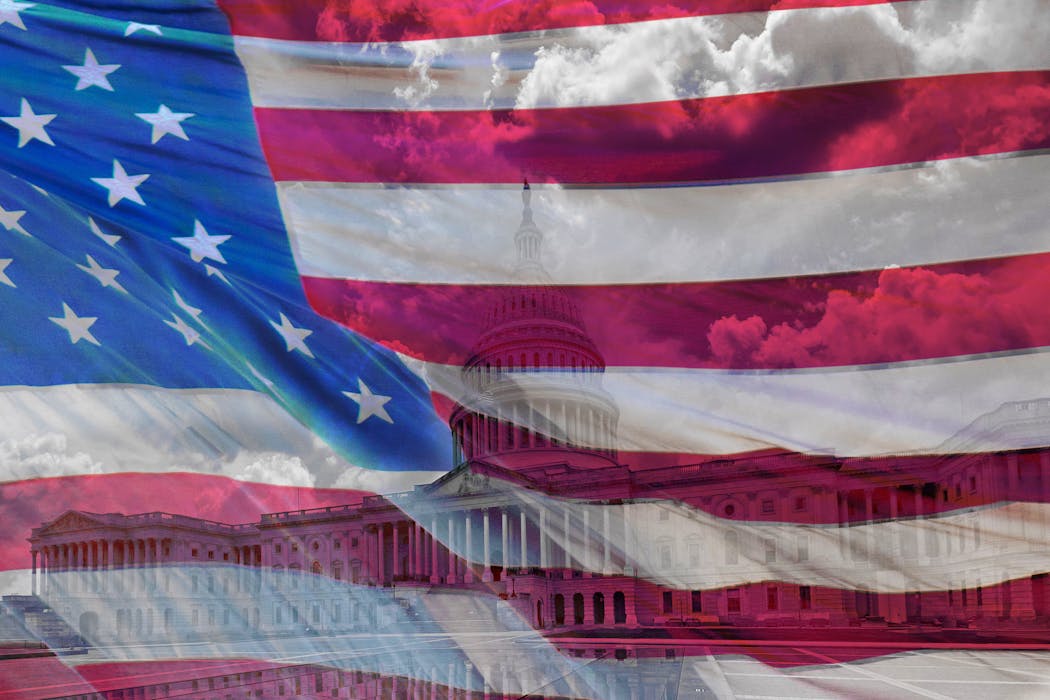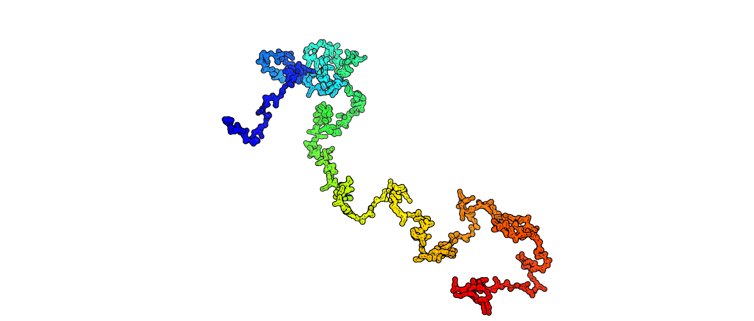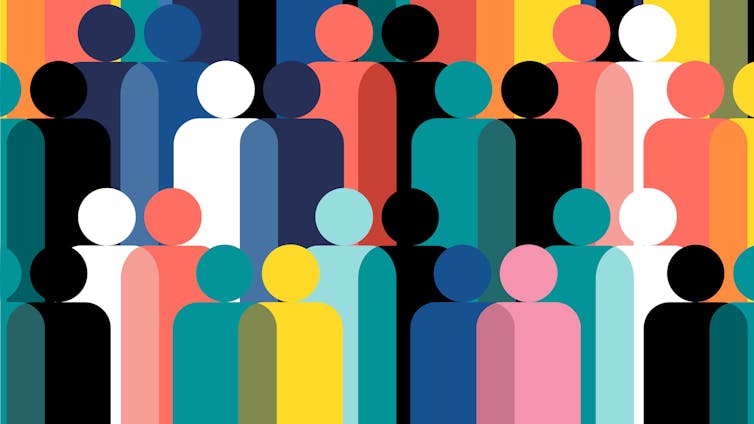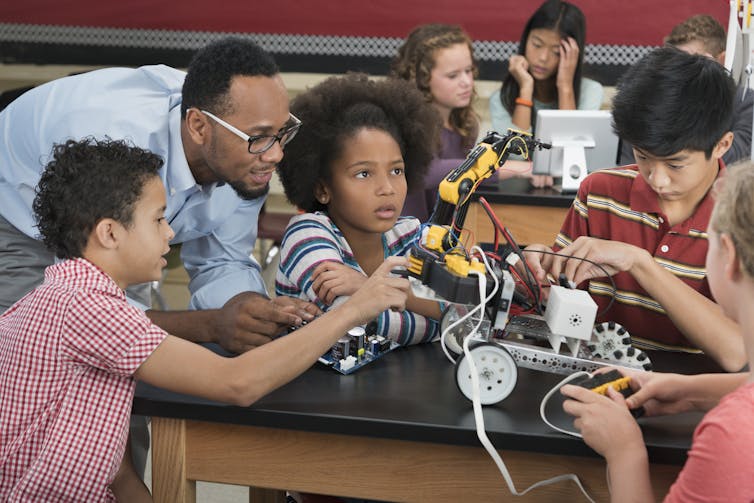Source: The Conversation – USA – By David Patterson Soule, Lecturer of Economics, University of Richmond

After the U.S. census is conducted every 10 years, each state must redraw its congressional districts to account for any loss or gain of congressional seats and to maintain an equal population in each district.
But in 2025, breaking from standard practice, President Donald Trump has asked Republican states to redraw their districts mid-decade to provide a greater Republican advantage in the upcoming 2026 midterm elections.
Not to be outdone, the Democrats have responded by starting a redistricting effort in California to offset the Republican gains in Texas. Californians will decide whether to approve those changes in a ballot measure on Nov. 4, 2025.
As other states join the fray, this battle for control of the U.S. House of Representatives has escalated to what the media has called a “Redistricting War.” In this war, the control of the House may be determined more by how each party is able to redistrict states they control and less by how citizens vote.
The media and politicians focus on which party is winning or losing seats. But are the citizens winning or losing in this conflict?
Studies have shown that districts contorted for political purposes make it more difficult for constituents to know who their representatives are, reduces representative-citizen interactions and lowers voter participation in elections.
Changing a resident’s congressional district will sever any existing relationship or understanding of who their current representative is and how to seek help or share policy concerns. This forces residents to navigate unfamiliar political terrain as they figure out their new district, who is running, and what the candidates stand for. This added complexity discourages residents from voting.
More importantly, it diminishes their faith in the democratic process.

Circlon Tech/Getty Images
Staggering scale of changes
Just how big are the changes already enacted in Texas and proposed in California?
The University of Richmond Spatial Analysis Laboratory, which co-author Kyle Redican directs, has analyzed the impact of the mid-decade redistricting changes. The number of redistricting casualties – residents reassigned to a new congressional district – caused by these mid-decade changes in Texas and California is nearly 20 million. That’s about 6% of the overall U.S. population.
The scale of the changes is staggering: 10.4 million Texas residents, about 36% of the state’s population, and 9.2 million California residents, about 23% of the state’s population, will find themselves in new, unfamiliar congressional districts.
Only one district in Texas, of 38 total districts, and eight districts in California, of 52 total districts, remain untouched, making this a pervasive upheaval, not a surgical adjustment.
Most dramatically, nine districts in California and eight districts in Texas will have more than 50% new residents, fundamentally changing the overall composition of those districts.
The 41st District in California will have 100% new residents, while the 9th District in Texas will have 97% new residents, essentially becoming entirely different constituencies.
Making a change of this size mid-decade, as opposed to once every decade, will be highly disruptive and represent a major tear in the fabric of representative democracy.
Lawmakers picking their voters
So who exactly is being moved? The demographic patterns reveal the calculated nature of these partisan manipulations.
In Texas, Black and Hispanic residents are disproportionately shuffled into new districts compared to white residents.
Minorities constitute 67.1% of Texans who have been moved into a new district, while minorities constitute only 56.4% of Texans who get to remain in their same district. By moving more minorities out of a district and into another reliably Republican district, partisan mapmakers are able to reduce the likely Democratic voter share in that district and swing it to be a Republican-leaning district.
California follows the opposite playbook: White residents are disproportionately moved.
There, 41.2% of those moved into a new district are white, while only 32.7% of those who get to remain in their same district are white. In this case, California is moving likely Republican voters into another reliably Democratic district, which reduces the Republican voter share in the original district and swings it to be a Democratic-leaning district.
In either case, legislators are making deliberate decisions about which residents to move to achieve a political goal.
Yet fundamental to a representative democracy is a simple principle: The people choose their representatives. It’s not that representatives choose their constituents. The founders envisioned the House of Representatives as the people’s house, representing and accountable to the voters.
In the current mid-decade redistricting, the legislators are handpicking their constituencies.
Mocking the fundamental idea
Does the redistricting battle ever end?
If mid-decade redistricting becomes an accepted way to win elections, each time a party wins control of a state legislature and governorship they will have the incentive to redistrict. Each of these future redistrictings will continue to negatively affect citizens’ participation in the representative process and mock the fundamental idea that citizens should choose their representatives.
It’s entirely possible that redistricting could happen every two years – though that is an extreme outcome of this competition.
Texas and California have fired the opening shots in the redistricting arms race. Other states – Missouri, North Carolina and Virginia – are joining the fight, each time diminishing the public trust in our democratic process.
Today, it’s 20 million Americans caught in the crossfire. Tomorrow, it could be 100 million as this conflict spreads from state to state. With tit-for-tat redistricting offsetting gains in seats, who is really winning?
For sure, we know who is losing – the people and representative democracy.
Spatial Analysis Lab intern Ryan Poulsen worked on the block data processing for this story.
![]()
The authors do not work for, consult, own shares in or receive funding from any company or organization that would benefit from this article, and have disclosed no relevant affiliations beyond their academic appointment.
– ref. Voters lose when maps get redrawn before every election instead of once a decade − a trend started in Texas, moving to California and likely spreading across the country – https://theconversation.com/voters-lose-when-maps-get-redrawn-before-every-election-instead-of-once-a-decade-a-trend-started-in-texas-moving-to-california-and-likely-spreading-across-the-country-268181
























